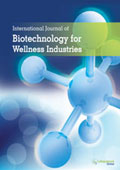ijbwi
|
|
Abstract: The extraordinary events of the last couple of years, like the surge and the topsy-turvy movement in oil, raw material and food prices, or the development of a so far unprecedented global financial and economic crisis, have been heavily testing the endurance of those earning their living from agriculture and related activities. All these troubles have not been beneficial to the ongoing trade liberalization process within the framework of WTO. Answers to the challenges at national level and the continuing proliferation of inter- and intraregional free trade agreements make the early global liberalization even less probable. The situation is further complicated by those really divergent changes of agricultural policy that are about to develop on the opposite sides of the Atlantic. In this paper, we describe the recent development of world’s agricultural production and trade; offer an insight into the evaluation problems of worldwide food insecurity; and briefly compare the upcoming agricultural policy reforms in Europe and the US. Keywords: Agricultural policy, agricultural and food production and trade, food security.Download Full Article |
|
|
Abstract: A clinical method for effective genetic screening of the aldehyde dehydrogenase 2 (ALDH2) gene was developed, using the fingernail as a source of DNA material. A highly effective protease that could solubilize fingernail keratin and inactivate any DNase co-existing in the tissue was obtained by cloning and sequencing the gene for alkaline protease from Bacillus alcalophilus, followed by expression of the gene in Bacillus subtilis. The amino acid sequence of MIB029 protease contained common regions found in four other subtilisin-like proteases. In the fingernails of 113 female university students (average age 20.8 ± 0.7 years; body mass index, 20.4 ±1.6), ALDH2 frequency was 0.66 for the typical Glu homozygote, 0.32 for the heterozygote (Glu487Lys), and 0.020 for the atypical Lys homozygote. Through a questionnaire, it was found that the subjects had not previously received information regarding the relationship between their genetic background and consumption of alcoholic beverages. We found that the genetic single nucleotide polymorphism (SNP) background to alcoholism can be easily detected by collecting fingernails, which is convenient for subjects or patients. Keywords: ALDH2 gene detection, genetic diagnosis, keratinolytic, Bacillus, alkaline protease.Download Full Article |
|
|
Abstract: This experiment examined the growth response of Chlorella vulgaris exposed to CO2 concentrations increasing from ambient to 8.5% and under white, blue, red and red-blue lights after 15 days incubation. Biomass production increased with increasing CO2 concentrations under all light sources. The highest biomass production, 1.59 g L-1, was obtained when the algae were supplied with 8.5% CO2 and exposed to white light. Biomass production under blue, red and red+blue light was 1.53 g L-1, 0.45 g L-1 and 1.27 g L-1, respectively. The research suggests that C. vulgaris is not able to adapt production of its photosynthetic pigments to absorb light sources different that it is normally has evolved to. Keywords: Chlorella vulgaris, Photobioreactor,Biomass production, CO2 concentration, Artificial light.Download Full Article |
|
|
Abstract: Bacteria have a great capacity for adjusting their metabolism in response to environmental changes by linking extracellular stimuli to the regulation of genes by transcription factors. By working in a co-operative manner, transcription factors provide a rapid response to external threats, allowing the bacteria to survive. This review will focus on transcription factors MarA, SoxS and Rob in Escherichia coli, three members of the AraC family of proteins. These homologous proteins exemplify the ability to respond to multiple threats such as oxidative stress, drugs and toxic compounds, acidic pH, and host antimicrobial peptides. MarA, SoxS and Rob recognize similar DNA sequences in the promoter region of more than 40 regulatory target genes. As their regulons overlap, a finely tuned adaptive response allows E. coli to survive in the presence of different assaults in a co-ordinated manner. These regulators are well conserved amongst Enterobacteriaceae and due to their broad involvement in bacterial adaptation in the host, have recently been explored as targets to develop new anti-virulence agents. The regulators are also being examined for their roles in novel technologies such as biofuel production. Keywords: Antibiotic resistance, AraC family regulators, Escherichia coli, Enterobacteriaceae, global regulators, drug development.Download Full Article |
|
|
Abstract: Colorectal cancer is the second most common cancer in Malaysia and up to 80% of its patients seek complementary therapies. Globally, up to 95% of cancer patient use adjunct therapies to reduce chemotherapy-induced side-effects. Morgan et al. (2004) had showed that conventional treatment for colon cancer produced minimal results. The vast majority of cancer survivors admitted to using dietary supplements and herbs after their cancer diagnosis. Current treatment seems to pay more attention to cancer as a disease rather than meeting the physiological needs of the patient. Nutritional therapy should be individually tailored since dietary deficiency is multifactorial and the tumor burden for each patient is different. Cancer is a metabolic disorder and colon cancer is strongly associated with advancing age, dietary and lifestyle habits. Up to 90% of all cancers might be prevented with proper nutrition since one-third of overall cancer deaths are linked to malnutrition. This case study shows how a late stage colon adenocarcinoma might be completely reversed by evidence-based phyto-nutritional therapy combined with some lifestyle modifications. The cancer apoptotic properties of this natural protocol warrant further investigation involving a higher number of patients with similar conditions. Keywords: :Colon cancer, metabolic disorder, complementary medicine, phyto-nutritional therapy, apoptosis.Download Full Article |



